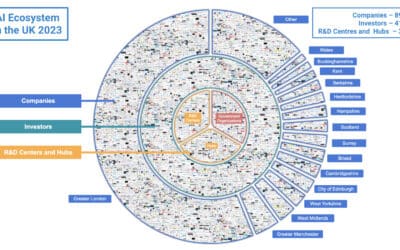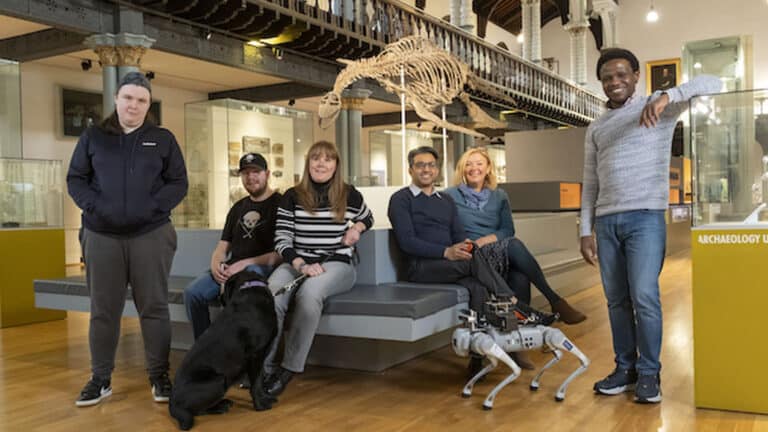Blind and partially-sighted people could soon receive assistance from robot guide dogs being developed by the University of Glasgow.
The RoboGuides, which have been developed with industry and 2 leading charities, use artificial intelligence to help people move more independently through public places such as museums, shopping centres and hospitals.
“Our assistive technology project for the visually impaired embodies innovation, fostering inclusivity,” said Prof Muhammad Imran, Dean of graduate studies at the University of Glasgow’s James Watt School of Engineering, and is co-investigator on the project.
“In Glasgow, we’re pioneering world-changing technologies that hold the potential to transform lives and reshape societal norms. This achievement was made possible through collaboration with industry and charity partners and co-creating the design with the invaluable input of end users.”
The RoboGuide system uses a series of sensors mounted on the robot, to accurately map and assess its surroundings. Software developed by the team help it learn the optimal routes between locations and interpret the sensor data in real-time to help the robot avoid the many moving obstacles it might encounter while guiding a human.
The robot also features large language model technology, so it can understand questions and comments from users and “provide verbal responses in return.”
“Assistive technologies like the RoboGuide have the potential to provide blind and partially sighted people with more independence in their daily lives in the years to come,” added Dr Olaoluwa Popoola, of the University of Glasgow’s James Watt School of Engineering. Popoola is the RoboGuide project’s principal investigator.
“One significant drawback of many current four-legged, two-legged and wheeled robots is that the technology which allows them to find their way around can limit their usefulness as assistants for the visually impaired.
“Robots which use GPS to navigate, for example, can perform well outdoors, but often struggle in indoor settings, where signal coverage can weaken. Others, which use cameras to ‘see’, are limited by line of sight, which makes it harder for them to safely guide people around objects or around bends.”
The Forth Valley Sensory Centre (FVSC) Trust and the Royal National Institute of Blind People (RNIB) Scotland have also lent their support to the development of the RoboGuide.
The system was tested for the first time late last year with volunteers from FVSC and RNIB at the Hunterian, Scotland’s oldest museum. The RoboGuide helped the volunteers find their way around the first floor of the museum, and provided interactive spoken guidance on six exhibits.
“We’re delighted to be supporting the research and development of technology that could be part of making the world more accessible and empowering blind and partially sighted people to live their lives confidently,’ said James Adams, Director, RNIB Scotland.
“Technology innovations like this are reshaping the future of accessibility and this partnership demonstrates their burgeoning potential to create of a more inclusive world.”
The nine-month research project is supported by funding from the Engineering and Physical Sciences Research Council (EPSRC), part of UKRI, through the Impact Acceleration Account programme.












